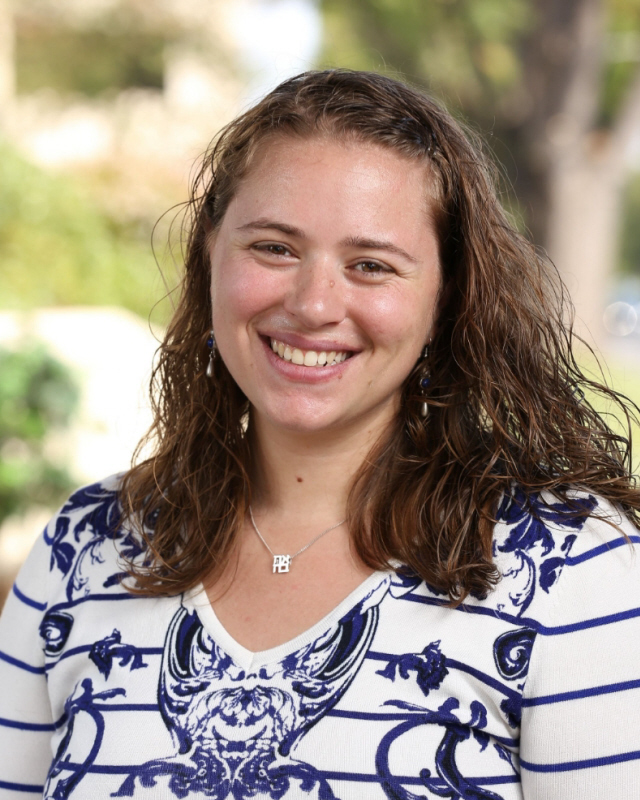Educator Impact:
Sarah canfield-dafilou
My Aspirations Playbook (MAP) is the outcome of years of research from leading Jewish organizations on the impact of Jewish education in the formation of identities. The Jewish Education Project created a framework using that research that enables Jewish children to wrestle with all facets of Jewish wisdom, tradition, and values, helping them live a life of meaning and purpose.
Read how one school’s task force—made up of teachers, parents, and school board members—revised their Jewish studies curriculum using this framework.
Sarah Canfield-Dafilou
Director of Congregational Learning, Woodlands Community Temple
White Plains, NY
“This past year, a curriculum task force made up of teachers, parents, and school board members met to completely revise our Jewish Studies Curriculum for grades K-6. Not only does this new curricular map scaffold the learning focus for each grade, it gives teachers a sense of the big picture so that each grade can build on what the students learned in previous years.
We surveyed faculty, students, alumni, and parents to learn what they loved about Kesher, the hopes and dreams they have for their students, and how they will apply their learning as they form future Jewish identities. We then analyzed those results to find themes and trends. The results focused on a love of community and engaging experiences in and out of the classroom.
We then turned to three existing curricular frameworks to map our survey themes and desired expectations onto concepts that could be explored in every grade, combining them as we revised the Kesher Jewish Studies Curriculum. The results are a curriculum map that highlights what students in each grade will know, do, and think about and how that learning can connect to what students learned or will learn in other grades.
Following are summaries of the three frameworks and how we layered them in developing the new curriculum.
My Aspirations Playbook (MAP) from The Jewish Education Project is the outcome of years of research from leading Jewish organizations on the impact of Jewish education in the formation of identities. Synthesizing that research, The Jewish Education Project created a framework that ‘enables Jewish children to wrestle with all facets of Jewish wisdom, tradition and values, helping them live a life of meaning and purpose.’ It is broken down into four sections with overarching questions. Our task force used the questions that corresponded with our survey results to frame our curricular outlines for each grade.
Inspired by Tiffany Shlain’s Periodic Table of Character Strengths from the Foundation for Jewish Camp and Mussar (a spiritually focused Jewish practice), Avi Orlow’s ‘Making Mensches Periodic Table’ assembles a collection of Jewish character strengths (middot) that we can cultivate to live more balanced lives. According to The Mussar Institute, it is up to every individual to determine what is on their “soul curriculum” and which middot they need to strive for creating more balance. In a classroom setting, a teacher would choose several middot such as gratitude, loving-kindness, creativity, and responsibility to explore through text, activities, and reflection.
18x18: 18 Jewish Things a Young Jew Should Know, Do, Care About, and Be Able to Do by Age 18 from the Institute of Experiential Jewish Education is a collection of ‘dimensions,’ whose ‘purpose is to provide an exemplary platform for planning and supporting effective efforts in Jewish education rooted in the translation of clear visioning into strategic implementation.’ Our task force used the dimensions that resonated with the results from our survey and connected them to the questions we highlighted in MAP.
How do these all fit together? The task force started with MAP and their overarching questions:
‘Who am I?’
‘How do I belong to my communities?’
‘How do I navigate my spiritual journey?’
‘How do I participate in the world?’
We then took the 18x18 Dimensions and grouped them with the MAP questions. So dimensions like ‘connect with Jews around the world,’ ‘care about Israel and her people,’ and ‘respond to issues facing American Jewry’ could all be ways to answer, ‘How do I belong to my communities?’ We would lift up middot from the Making Mensches chart like responsibility, pursuit of peace, and courage when exploring those dimensions.”


